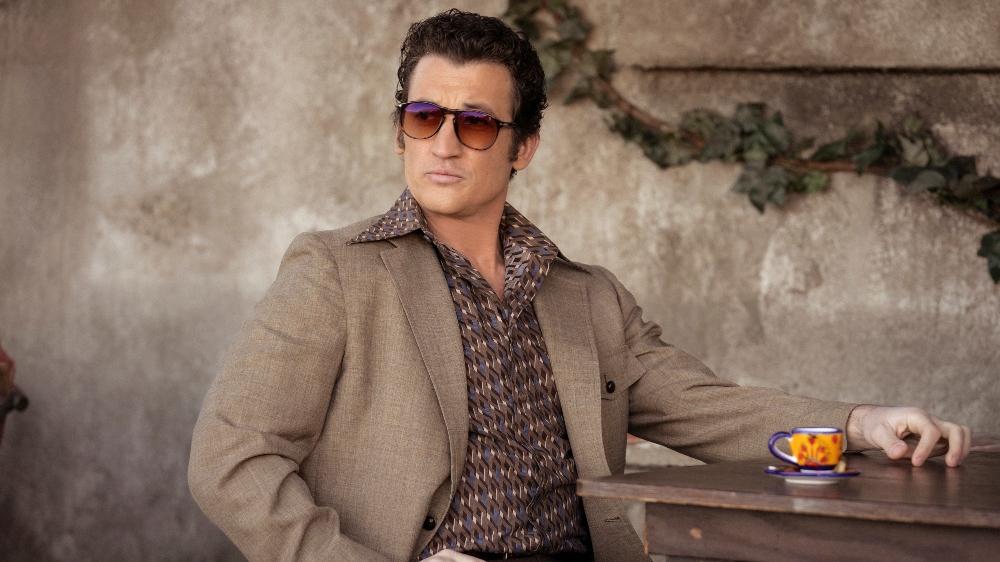
Growing up, Elie Smolkin loved movies. He and his family shared a routine, wherein Elie, his brother, and their mother would drop by their local Blockbuster, and each got to pick one new movie from the expensive aisle and four from the 99-cent aisle. On weekends, they’d sit and watch all the movies.
“We had such different tastes,” Smolkin told Below the Line during a recent conversation. “I was obsessed with Westerns. I loved them. That’s when spaghetti westerns caught my eye.”
Smolkin — who was raised in Vancouver and Chicago — soon developed an interest in photography, and that paved the way for his career as a cinematographer. He first earned his stripes working on commercials before shifting into features and then also television. Smolkin counts among his credits The Grind, The Final Girls, Good Behavior, I’m Dying Up Here, The Magicians, Dirty John, Truth Be Told, and The Aviary, as well as the upcoming shows, Surface and The Consultant.
Lately, Smolkin has been earning raves for his work on the last four episodes of the Paramount+ miniseries The Offer, which chronicles the making of The Godfather. As such, Smolkin and Salvatore Totino, who served as D.P. on the first six episodes, were called upon to not only depict early 1970s Hollywood but also to recreate iconic moments from one of the greatest movies of all time — The Godfather.
Below the Line recently spoke with Smolkin, who discussed his career inspirations before taking us deep inside his experience shooting The Offer.
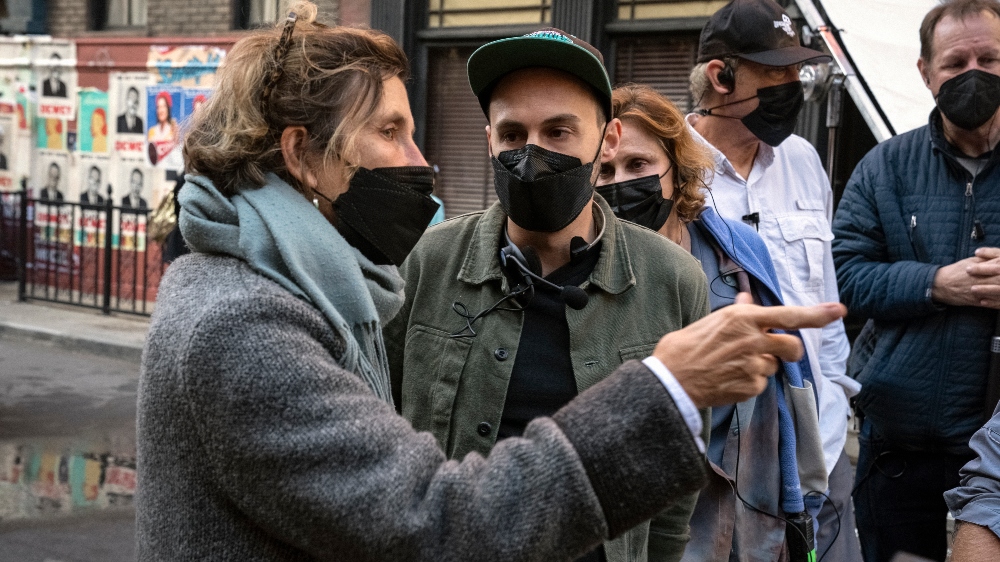
Below the Line: What do you remember seeing as a kid that had you thinking, “This is what I want to do”?
Elie Smolkin: I definitely saw Unforgiven at a way too young age. I watched it with my dad and it was so impactful. That was the first movie that I didn’t just enjoy, but actually made me have an emotional response. It’s the cinematography that stood out to me. It’s such a beautiful movie. It’s incredibly powerful, and it’s almost like an anti-western. The killing isn’t easy, and vengeance is hard. Between both the storytelling and the visual storytelling, that was the first time I registered that you could create emotion through a film. That resonated with me as I started to realize I wanted to be in the movie industry.
BTL: How did you get the offer to do The Offer?
Smolkin: That was an awesome opportunity — and serendipitous. I’ve always been a big fan of Sal Totino; he does incredible work. Due to production delays, The Offer was going a little later than expected. Sal and Dexter [Fletcher, who directed the first two episodes] were due to make a movie that conflicted with the new end dates and they needed someone to come in for the last four episodes. Sal has the same agent I do. He was looking through recommendations, and he had seen my work. We hopped on a call and we talked a lot about the show – what he’d been doing – and we hit it off.
He then recommended me to the showrunners, and I had another meeting, with (executive producers) Nikki [Toscano] and Russell [Rothberg]. That was just a good meeting. I had an excellent talk with (producer) Michael Scheel, and I was so excited about it. I love The Godfather and the idea of getting to tell the story of that story was such an exciting opportunity. I was all in from the minute I even heard the concept. We had those meetings, and I’d just wrapped a show, so I got on the plane, flew right back to LA, jumped right into prep, and got started.
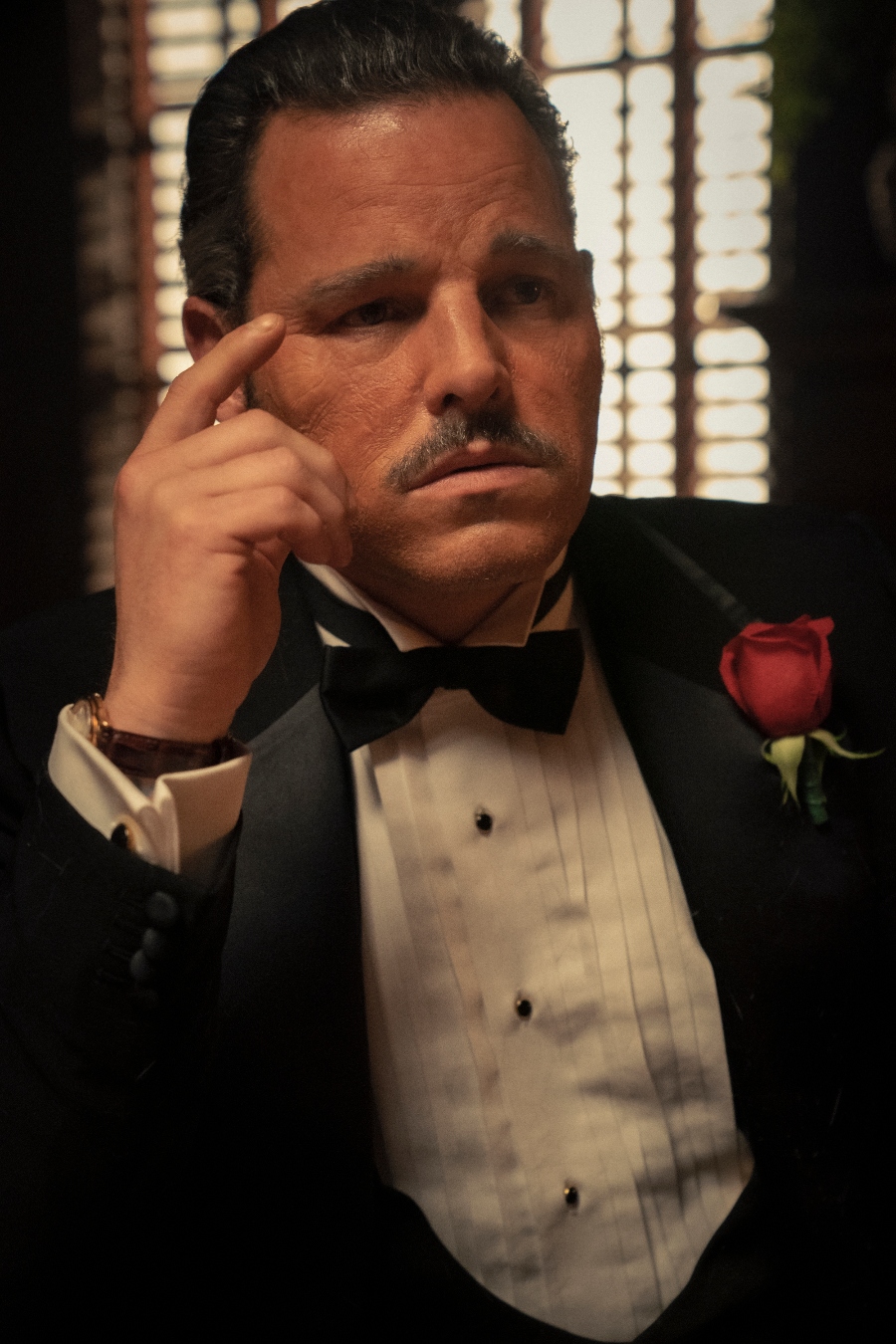
BTL: What homework did you do for this? How many times did you re-watch The Godfather?
Smolkin: I re-watched The Godfather a bunch. I looked at a million photo references. Also, behind-the-scenes photos. There’s a decent amount of behind-the-scenes photos, which were fascinating, because you could see some of the tools that were used to create scenes. I found that to be helpful. Even if we didn’t use the exact same thing, we got to see how it was created. What’s interesting to me is that the show itself doesn’t necessarily mimic The Godfather, because it plays with this wave of naturalistic, realistic photography. We go deep into the mafia underworld. It’s dark, moody, and tips its hat to The Godfather.
Eventually, in the later episodes, which I was fortunate to shoot, you get to actually recreate the before and after of a scene. That was another key element; we were never trying to shoot the scene again, shot for shot. It was always about the moment before or the moment after, when you saw that set right behind the actors and what that would look like; how it would feel to be behind the scenes. It was amazing. The research involved looking at The Godfather, but also looking at behind-the-scenes photos, watching a ton of the dailies, and the cuts that Sal, Dexter, and Colin [Bucksey, another director] had done before I got there, just to make sure we were in the same world.
BTL: In the sense that a number of Godfather scenes are recreated, you were redoing Gordon Willis. Totino was on The Offer before you, so he established the show’s template. It must’ve been a unique challenge to put your stamp on The Offer because part of your job was to follow in their footsteps…
Smolkin: It was challenging, and I loved it. First of all, like I said, I’m a huge fan of Sal’s work. I’m also a huge fan of Gordon Willis’s work. If I was going to have to try to fit into a world, that’s two great places to start. It was nice, because there’s a progression in the series. I get to take the template that Sal created… the anamorphic lenses, this naturalistic look, and the specific camera movements. It’s mostly dolly, with very little Steadicam. There’s a lot of crane work, no handheld. We’re moving with these characters and when we land, we’re recreating these tableaus. I love that.
What was creatively fulfilling for me was taking that template and pushing it into the Gordon Willis world when we were trying to recreate those scenes. That’s where you get to put your stamp on it, as you’re establishing new sets or as you’re starting to move the show towards the classic scenes that everybody automatically remembers. It’s like, ‘How do you recreate those and how do you make it feel right for the show, while also reminiscent and nostalgic of the thing that we’re creating?’ That was challenging but unbelievably fun.
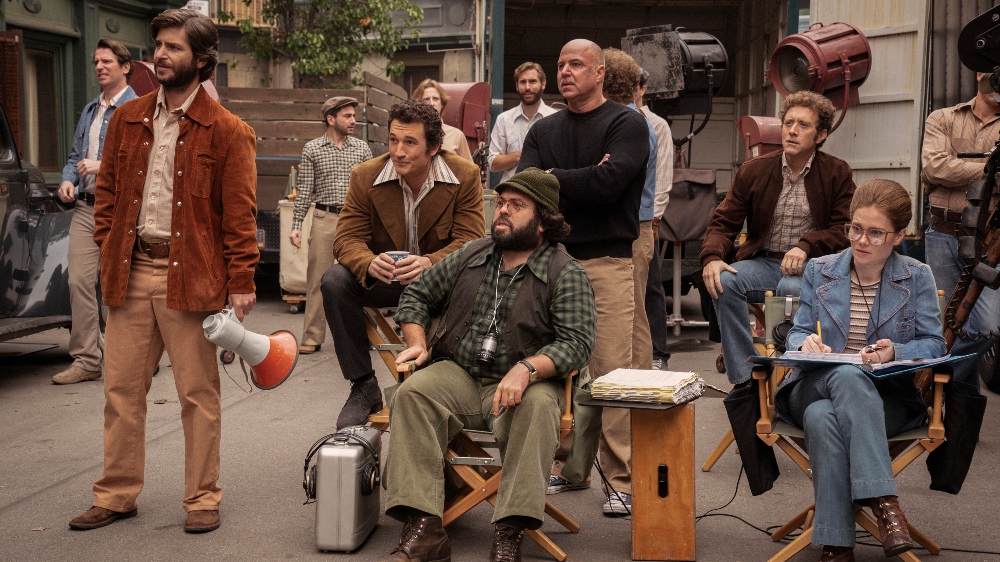
BTL: What single Godfather sequence were you most stoked to put on film?
Smolkin: When the Don gets shot. That is such an iconic scene. The overhead shot with the oranges and him on the ground. I’ve probably used that shot in pitch decks a million times. The art team built that little corner of the street to recreate that. We also had to find the right time of day. One of the challenges when you shoot in New York, the buildings are extremely tall. In L.A., on backlots, the buildings are extremely short. The natural shade that comes from those buildings and the quality of light bouncing… you’re getting this refracted light, and it’s a cooler color. That’s hard to recreate. That was one of the most exciting things; trying to figure out how to achieve that on our show, in L.A. on a backlot, and to weave it into the story with this intercut. That was rewarding.
BTL: Technology has evolved so much since The Godfather. Did you go high-tech to mimic old-school techniques? Or did you go old-school as much as you could? Or both?
Smolkin: It was a combination of both. We were shooting digital and not film, so that was a big change. One thing that The Godfather is famous for is the overhead lighting in the Don’s office; the top light that creates shadows, and you either can’t quite see what Brando’s eyes look like or there’s just a little point of light in there. Even the opening shot. The famous shot of the pullback, it’s a zoom, actually. It starts close up and slowly pulls back. All you see are these dark shadowy eyes and the point of light. We didn’t do it in the exact same way.
As far as the technology goes, we had LED lights, but we had a toplight Softbox that created the toppy light. Then there’s a scene in the bathroom — when Pacino goes into the bathroom to find the gun. We recreated that set, and when you look at the footage it feels like — and I don’t know if this is true, because there’s no behind the scenes — it’s just a light bulb in that set, creating shadows from the doorway. We do a scene with five of our heroes in that bathroom, and we ended up lighting it with a light bulb. It was a mix of trying to recreate it and sometimes going old-school, whereas for other scenes we went a little more high-tech, a little more modern.
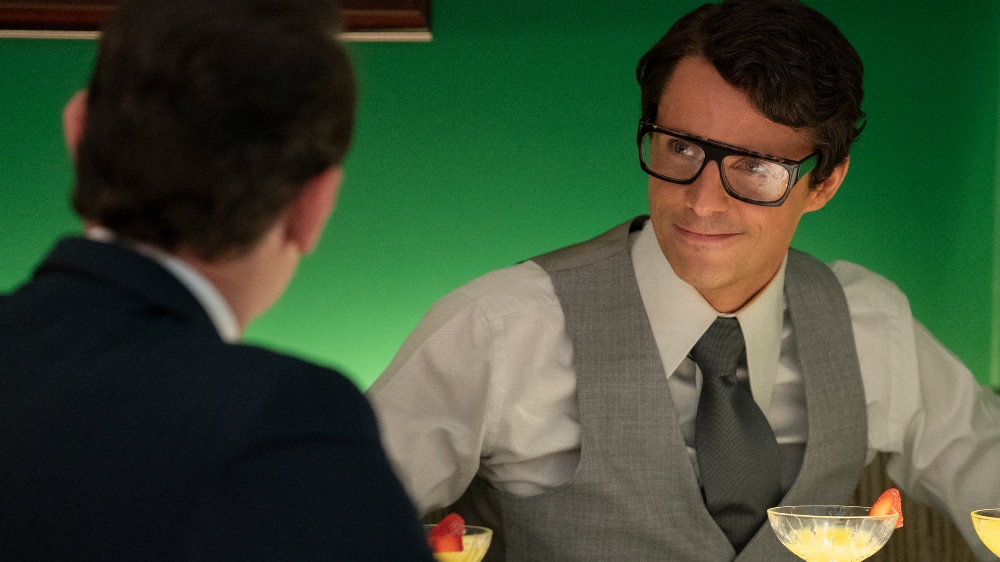
BTL: Directors of photography often push in tight with a camera. COVID has been all about keeping a distance. How has the pandemic affected what you do and how you do it?
Smolkin: I’ve done maybe five shows now during COVID. My first, coming back from the lockdown show was Truth Be Told for Apple. Everybody was figuring it out. There was a lot more trial and error as far as what would work, to both stay safe and function on the set. What I love about film is it’s hundreds of people doing their own specific skill, task, or creative art, and that creates one big thing. Everybody works closely together, physically and creatively. The biggest thing I’ve noticed for every show, as it’s evolved, is that it’s gotten good (safety-wise). The Offer did a great job.
Everybody wore K-95 masks. Everybody social distanced as much as they could, within reason. If you need two people to lift the light, no one wants to break their back and do it by themselves. When you can use social distancing, there’s the zone. Everybody has a zone, so you can figure out who you’re closest with and start to contact trace if something happens. Every show I’ve done, including The Offer, has been vigilant with the testing. That makes you feel safe, if you’re testing, let’s say, three days a week, wearing a K-95 mask, they’ve got all this air filtration on the stage, you’re social distancing, and you’re not removing your mask unless you’re outside eating at a distance. Every show I’ve been on during the pandemic has taken it seriously, and that’s nice to see.
BTL: You directed one episode of The Magicians. How interested would you be in making that shift into directing? Or is it your preference to remain a cinematographer?
Smolkin: Oh, absolutely. I love my job. I love cinematography, there’s no doubt about it. Directing was an incredible experience. It made me a stronger cinematographer. When you do other people’s jobs, you start to have empathy and understanding of why choices are made, like what helps a director, from storytelling and blocking standpoints. I learned so much about what a director needs to be successful, and that’s what made me a better cinematographer.
I’d love to direct again, but my dream is to find shows where I love the story, crew, and cast, and want to stay there. When you’re a DP and you’re there for the whole season, you know the whole story. You know the cast, and what works between seeing the cuts and footage. To then get to direct an episode of the show that you’ve been working on, that’s a dream because you’re one step further. I don’t think it’s going to be a full-time directing thing. It’s more to get to do cinematography and add the directing on the right project.
All 10 episodes of The Offer are now available on Paramount+.





